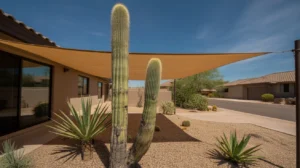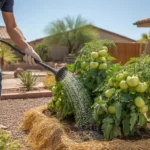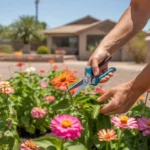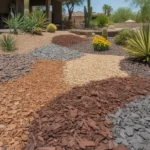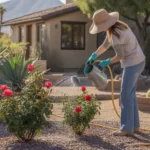As summer temperatures soar in Chandler, even hardy desert plants like cacti can suffer from heat stress and sun damage. While these iconic succulents are adapted to intense conditions, a little extra care goes a long way in protecting your cactus collection from extreme heat. With a few smart strategies, you can help your prickly garden favorites sail through the scorching season unscathed.
Provide Filtered Shade During Peak Hours
Though cacti are sun-loving plants, the harsh midday rays can be too much to handle during the height of summer. Sunburn on cactus appears as bleached or bronze discoloration and can permanently scar the plant. To prevent this damage, give your cacti a break from direct sun exposure during the hottest part of the day, typically from noon to late afternoon.
One easy solution is to position shade cloth or screens around your cactus beds, angled to block the most intense rays while still allowing bright, indirect light. Look for materials rated to block 30-50% of sunlight — enough to provide relief without completely shading out sun-hungry cacti. Secure shade cloth with stakes or attach it to a simple frame for a quick, effective screen you can remove once temperatures drop in fall.
For potted cacti, simply move the containers into a bright but shaded spot like a covered patio or under the dappled canopy of a desert tree during peak heat. Caster wheels make it easy to roll large pots in and out of the sun as needed. Remember, the goal is filtered light, not deep shade, so avoid dark corners or dense foliage that block too much sun.
Water Deeply But Infrequently
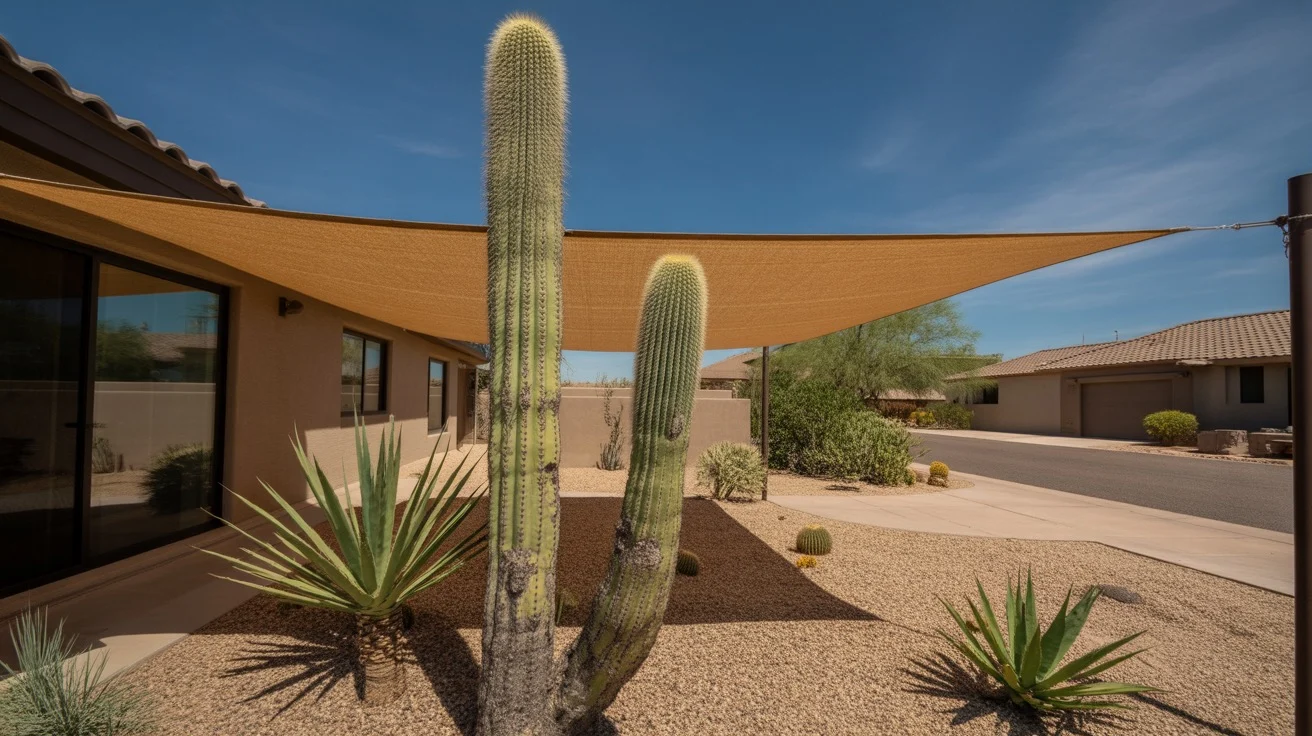
While it’s a myth that cacti don’t need water, it’s critical to strike the right balance, especially in summer. Overwatering is one of the quickest ways to kill these drought-adapted plants, but skimping on hydration during a heatwave can lead to shriveling and undue stress. The key is to water deeply and thoroughly, then let the soil dry out completely before watering again.
For most Chandler cacti, this means a deep soak every 10-14 days during the summer months, adjusting for rainfall and your soil type. Use a moisture meter probe or stick your finger knuckle-deep into the soil to check dryness before watering. When irrigation day rolls around, use a soaker hose or drip system to slowly saturate the root zone, applying water at ground level to keep cactus stems and crowns dry.
If monsoon rains roll in, resist the urge to water on top of this natural precipitation. Cacti are easily waterlogged and may rot if the soil stays soggy for too long. After storms, give the ground time to dry out fully before resuming your irrigation schedule. Applying a layer of gravel mulch can help speed up surface evaporation while shading the soil and cooling cactus roots.
Monitor for Signs of Heat Stress
Even with shade and proper watering, cacti can still suffer during extreme heatwaves. Familiarize yourself with the warning signs of heat stress so you can intervene early and prevent permanent damage or death. Sunburn lesions, as mentioned above, are a clear red flag that a cactus is getting too much direct sun and needs more shade or temporary relocation.
Shriveling or deflated stems may indicate underwatering or root damage from excess heat. While it’s normal for cacti to shrink slightly during dry spells, severe shriveling or puckering merits a slow, deep watering to help the plant plump back up. Just be careful not to overcompensate, as waterlogging a heat-stressed cactus can easily rot the roots.
Finally, keep an eye out for yellowing, mushy, or oozing spots on your cactus, especially near the base. These can be signs of bacterial or fungal infections exacerbated by heat and improper watering. If you spot any of these symptoms, promptly remove the affected parts with a clean, sharp knife and reduce watering until the plant recovers. Improving air circulation and ensuring well-draining soil can help speed healing.
Choose the Right Planting Sites
When adding new cacti to your Chandler yard, set them up for success by choosing planting sites wisely. While it’s important to meet a cactus’ sun needs, reflected heat from walls, rocks, or pavement can amplify summer temperatures and scorch even the toughest desert dwellers.
Avoid planting cacti in cramped southern or western exposures where the sun’s rays bounce off nearby hard surfaces. Instead, choose open, airy locations where heat can dissipate and the cactus isn’t subjected to constant radiant warmth. Placing tall, columnar species on the eastern side of a wall or fence ensures morning sun exposure while providing afternoon shade and heat relief.
In pots or raised beds, pay close attention to soil temperatures, as the limited soil volume can heat up quickly in direct sun. Glazed ceramic or light-colored containers help reflect heat, as do concrete or stone beds. Avoid metal and dark plastic pots, which can essentially “cook” cactus roots in the hot summer sun.
Know When to Bring Cacti Indoors
In extreme cases where summer temperatures soar above 120°F or a cactus shows severe signs of heat stress, it may be necessary to move the plant indoors temporarily. This is especially true for sensitive species like Christmas or Easter cactus, which benefit from a summer vacation in a bright, air-conditioned room.
Before bringing any cactus inside, check it carefully for pests like mealybugs or scale that may spread to your other houseplants. Treat any infestations and quarantine new indoor arrivals for a week or two to prevent outbreaks. Most cacti won’t tolerate the low light levels indoors for long, so return them to a shaded outdoor spot once the worst of the heat has passed.
With these strategies in your arsenal, you can help your cactus collection weather even the most brutal Chandler summers. By providing filtered shade, proper watering, and a watchful eye, you’ll keep your prickly pals healthy, happy, and primed for their moment in the sun once cooler autumn temperatures return.

